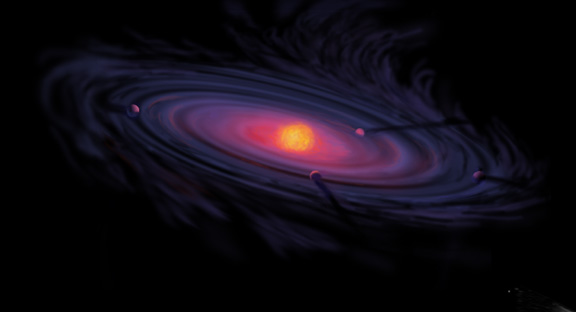


A talk presented at
The Bath Royal Literary and Scientific Institution
16 Queen Square, Bath, BA1 2HN 01225 312084
On Tuesday Evening 2nd April 2013

How could a planet, condensed from a cloud of dust, have produced minds -- and
products of minds, along with microbes, mice, monkeys, mathematics, music, marmite,
murder, megalomania, and all other forms and products of life on earth (and possibly
elsewhere).I'll introduce the ambitious, multi-disciplinary Meta-Morphogenesis project, partly
inspired by Turing's 1952 paper on morphogenesis. It may lead to an answer, by
identifying the many transitions between different types and mechanisms of biological
information processing, including transitions that changed the mechanisms of change,
altering forms of evolution, development, learning, culture and ecosystem dynamics.
One of the questions raised is whether chemical information-processing exceeds the
powers of Turing machines and modern computers.The talk will be highly interactive.
For more information about the meeting see the Bath Royal Literary and Scientific
Institution web site.Slides prepared for this talk and another talk are now available online here (in PDF) format:
http://www.cs.bham.ac.uk/research/projects/cogaff/talks/#talk107b
Also on slideshare.net http://www.slideshare.net/asloman/dag13-sloman (FLASH)A video recording of a much longer, closely related, tutorial presentation at
AGI 2012, Oxford, is available on Adam Ford's web site:
http://www.youtube.com/watch?v=BNul52kFI74For more information about the Meta-Morphogenesis project see:
http://www.cs.bham.ac.uk/research/projects/cogaff/misc/meta-morphogenesis.html
http://www.cs.bham.ac.uk/research/projects/cogaff/misc/evolution-info-transitions.html
A partial index of discussion notes is in http://www.cs.bham.ac.uk/research/projects/cogaff/misc/AREADME.html
Maintained by
Aaron Sloman
School of Computer Science
The University of Birmingham